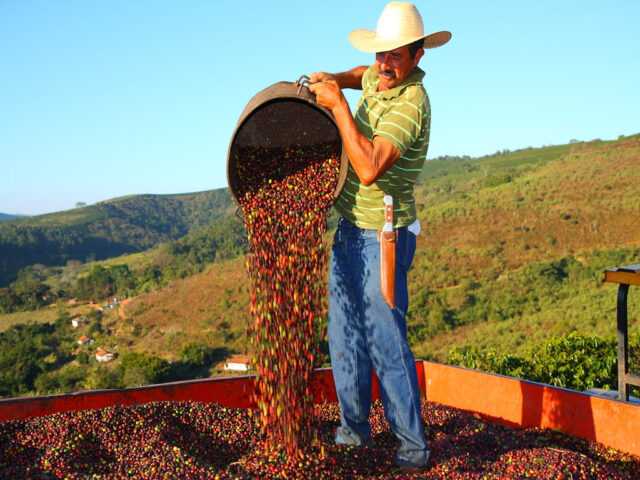SAO PAULO, Brazil – The price gap between arabica coffee type 7 (rio beverage) and robusta coffee type 7/8 – both lower quality and very demanded by coffee roasters – resumed narrowing in the 2019/20 season, after being wide in the last two crops (2017/18 and 2018/19), says Cepea in its latest report.
This season (July to October/19), the price gap between these two coffee types is at 44.57 Reais per 60-kilo bag, against 60.59 Reais/bag, in real terms, in the last crop (values were deflated by the IGP-DI from September/19).
Although robusta prices have been dropping in the current season, due to the production offset starting 2017/18, quotes for arabica type 7 decreased sharply in the last two months, helping to narrow the price gap between these two varieties.
The 2019/20 arabica crop has been facing quality problems, which is increasing the availability of lower quality beans, such as arabica type 7 rio beverage. Agents have reported lower demand for this variety, since, besides the increase in the amount of robuta in coffee blends at Brazilian coffee roasters, the exports pace for arabica type 7 has been low. According to agents, the strong US dollar in the main coffee importing countries and the lower availability of coffee type 7 have been reducing Brazilian coffee exports.
On the other hand, the price gap between higher quality arabica and robusta coffees has widened. This season, the gap between the CEPEA/ESALQ Indexes for arabica and robusta coffee, both type 6, is at 135.55 Reais per 60-kilo bag, while in the same period last season (2018/19), the gap was at 100.35 Reais/bag, in real terms.
The increase in the price gap between these two coffee varieties is linked to the stability of arabica quotes early in the crop, due to concerns about the weather during the harvesting of the 2019/20 crop and the development of the 2020/21 crop. Despite the gap widening, until the end of the crop, it should remain similar to that in 2018/19.
The price gap between these varieties should continue narrow along the 2019/20 season. For robusta, production is high this crop and the volume available in 2020/21 is expected to be large. Besides, in October, Vietnam started to harvest a good 2019/20 crop, which should influence quotes in Brazil.
As regards arabica, however, prices are expected to be lower than that in previous seasons (similar to that in late 2018/19). Despite the crop failure in 2019/20, growers still have coffee remaining from 2018/19, and the output in the 2020/21 season, which will be of a positive biennial cycle, should be high, keeping pressure on quotes.
Market in October
The trading pace for arabica coffee was very slow in the Brazilian market in October, reflecting sellers’ retraction. The lack of coffee growers in the spot market, in turn, was due to concerns about the weather in Brazil.
After flowers opened in mid-September, many growers became worried about the high temperatures and low rains in the following weeks. In general, most arabica crops need high rainfall, so that trees have a better physiological recovery. Part of the trees have no leaves, which may hamper beans filling.
Thus, the dry weather may hamper the development of the 2020/21 crop and, consequently, influence prices. With growers away from the market, the total coffee volume from the 2019/20 crop already traded is low and almost stable compared to sales in September.
Robusta
Robusta coffee growers were focused on the weather. Flower settlement in the 2020/21 crop was successful in most trees from Espírito Santo (ES) and Rondônia (RO) States, and fruitlets were developing.
With growers away from the market, the robusta volume traded in October was stable compared to that from September.


















